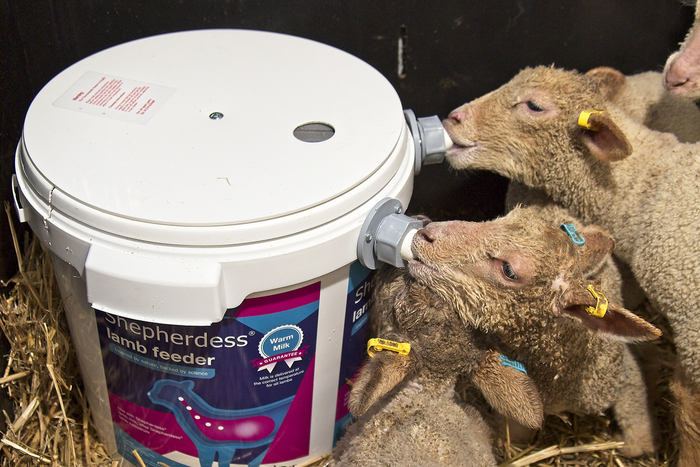Sheep farmers are encouraged to ‘gem up’ on mixing lamb milk replacer to make sure they get the very best results when feeding it through a feeder or by bottle.
As the peak lambing season approaches, the pressure is on to maximise the lamb crop, and this year many farmers are anticipating good numbers as the scan results across many units have shown an above average proportion of twins and triplets.
“This means that we might have more lambs needing a top up of milk or for putting on the lamb feeder,” says Cargill ruminant specialist Donald Macleod.
“We encourage farmers to have a good lamb feeding system and quality milk at the ready. But it’s essential that this milk is mixed correctly.”
The wrong concentration, or not mixing with the right temperature of water are common pitfalls on farms, according to Mr Macleod.
“If a 20% concentration is recommended for the lamb milk, this means 200g of powder mixed with 800ml of water to make a litre. A common mistake is adding the 200g of powder to a litre of water. This gives a weaker mixture and lambs are not forgiving creatures – growth rates will soon suffer.”
He advises farmers to measure 200g of powder before lambing starts and mark it on the measuring jug. And to make sure this jug is kept clean.
“And if you swap milk powders, say from a skim based to a whey-based powder, re-weigh the 200g as it might have a different density and take up more or less space.”
Water temperature when mixing the milk is crucial too. Boiling water will denature and break down the protein and lukewarm water can cause separation of the fat globules due to high fat content of lamb milk; this high fat content typically found in lamb milks helps prevent hypothermia and starvation.
“Milk should always be added to two thirds warm water, between 50⁰C and 55⁰C, and one third cold water, so it’s important to have a thermometer to hand and put a mark on the ‘spot’ with indelible ink,” he adds. “This ensures that the powder is mixed at the correct temperature and the lambs are fed out at optimal drinking temperature.
“Those feeding ad lib can use the feeder’s thermometer to check the milk is fed warm and, in the case of the Shepherdess feeder that has an inbuilt heater element and insulation, farmers have the assurance that this milk will be kept at the ideal temperature for more than 12 hours; even after a power failure.”
Milk should be fed through bottles at 42⁰C to 43⁰C, slightly above the lamb’s normal body temperature of 38.5⁰C and 40⁰C.
Clean utensils and mixing equipment are essential. “Cleanliness is king when it comes to lamb feeding especially in the early days when the lamb can have low immunity to disease,” adds Mr Macleod. “Clean the milk buckets and tubes before refilling, and make sure the teats are not split or dirty; have a full set of spares to hand before lambing starts in earnest.
“We all know how hectic lambing time is, but a few simple practices can eliminate most of the difficulties that appear around lambing. Good practice is to have a typed protocol on the wall, then everyone knows what needs to be done.”
MIXING GUIDELINES
- Be clear on concentration rates
- Add milk replacer to two thirds warm and one third cold water to ensure good mixing and optimal feeding temperature
- Feed warm milk – above body temperature for bottle fed lambs; or through a feeder that monitors and maintains milk at the ideal temperature
- Keep all mixing and feeding equipment clean
- Print the rules clearly so everyone can follow


